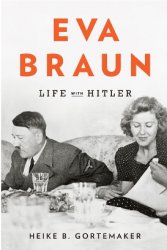The most significant Cossack rebellion in the post-Khmelnytsky period was directed by the Hetmanate against Russian rule. The leader of this revolt was Ivan Mazepa, who was born into a Right Bank Ukrainian noble family in 1639 and had been educated in both Kiev and Warsaw. He served as an emissary from the Polish king to Cossack Ukraine in the 1660s. He was captured by the Zaporizhian Cossacks but managed to win their confidence and, in the 1680s, established good relations with the Russians. With their support, he was elected Hetman in 1687.
There was little to suspect that Mazepa would rise up against his benefactors. For most of his two-decade rule as Hetman, he pursued the policies of his predecessors, issuing more land grants to the starshyna and cultivating good ties with Russian tsars, which allowed him to augment his own land holdings to become one of the wealthiest men in Europe. He was a patron of the arts, building Orthodox churches in the Cossack or "Ruthenian" Baroque throughout the Hetmanate. These included St. Nicholas, the grandest church in Kiev (destroyed by the communists in 1934) and a Baroque makeover of the venerable St. Sophia's. He put down the aforementioned peasant-based revolt in 1692 and lent his support to the campaigns of Tsar Peter I (1682-1725, often referred to as "Peter the Great") against the Ottomans and Tatars. He became a close advisor of Peter, leading Cossack officers to quip, "The tsar would sooner disbelieve an angel than Mazepa" and Russian officials to declare, "There has never been a hetman so helpful and beneficial to the tsar as Ivan Stepanovych Mazepa."4 In 1703, during a Cossack revolt in Polish-controlled Ukraine, Mazepa won Peter's approval to send in his own forces to occupy the Right Bank. Mazepa was thus able to unify many of the Ukrainian lands.
Mazepa's alliance with Peter, however, began to show signs of strain. The Great Northern War, whose main antagonists were Russia and Sweden, began in 1700; and, after a series of defeats, Peter launched reforms to centralize his authority. Much of the autonomy promised to the Cossacks was placed in jeopardy. Cossacks, who traditionally fought on the southern front against Tatars, Ottomans, and Poles, were sent north to fight against the Swedes. Given the superior military technology of the Swedes, the results were often disastrous for the Cossacks. Morale worsened in 1705 when Peter decided to assign Russian and German officers to Cossack regiments. Contemptuous of the "backward" Cossacks, these officers often used them as cannon fodder.
Although both the starshyna and average peasants felt the burdens of war, Mazepa himself felt insecure amid rumors that the tsar intended to replace him with a Russian or foreign general.
The final blow came in 1708 when Peter I refused to defend Ukraine against invasion from the Polish allies of Sweden. Defense against the Poles had, after all, been the basis for the Treaty of Pereiaslav. When Charles XII of Sweden diverted his forces from Moscow and entered Ukraine, Mazepa allied with him in the hope that this would spare Ukraine from devastation. In an agreement concluded in the spring of 1709, Charles XII agreed to protect Ukraine and refrain from making peace with the tsar until Ukraine was free of Russian control.
Peter labeled Mazepa the "new Judas." His commanders attacked the Het-manate's capital at Baturyn and massacred its inhabitants. A Russian reign of terror descended on Ukrainian lands. Fearful of Russian retributions and unsure about an alliance with the Protestant Swedes, many Ukrainians refused to join Mazepa, who had at his command only 4,000 Cossack troops. In May 1709, the Russians destroyed the Zaporizhian Sich (which had sided with Mazepa), and in June of that year the Russians defeated the Swedes and Cossacks at the Battle of Poltava, one of the most important battles in European history, as it ended Sweden's quest to become the dominant power in northern Europe and allowed the Russians to expand westward along the Baltic coast. For Ukraine, the battle was the end of their hopes to break away from Russia. Pursued by the Russians, Charles XII and Mazepa fled to Ottoman-controlled Moldavia. Mazepa died there on September 21, 1709.
After the failure of Mazepa's revolt, the Hetmanate was absorbed into the Russian Empire. Russian troops were stationed on the lands of the Hetmanate, and a Russian became the Cossack's army top commander. In 1722, the tsar set up a Little Russian Collegium, made up of Russian officers based in Ukraine, to share power with the hetman. Meanwhile, Cossack forces were sent to the north to help build Peter's new capital, St. Petersburg. For the first time, Russians were allowed to acquire large landholdings in Ukraine, and Prince Aleksandr Menshikov, a favorite of Peter, became the Hetmanate's largest landowner. Publishing was supervised lest Ukrainian books promote ideas contrary to those found in Russian publications. In 1721, Peter subordinated the Orthodox Church to the state and abolished the Kiev Patriarchate. The Ukrainian economy, particularly export of grain, came under control of the Russian state. Russian authorities supervised the election of new hetmans, working to ensure that the choice would be subservient to Russian desires. From 1734-1750, Russia set up a new body, the Governing Council of the Hetman's Office, a committee headed by a Russian prince, to rule in lieu of elections for a single hetman.
The Hetmanate's incorporation into Russia, however, was a drawn-out process. Although the powers of the Hetmanate were increasingly restricted, the Hetmanate itself was not abolished until 1785. Part of the Russian calculation was to not unduly antagonize the "Little Russians" because Russia needed their support for wars with the Ottomans. Russian-Turkish conflicts throughout the 1700s, however, were devastating for Ukrainians, who were conscripted to fight and expected to provide material support to Russian forces on Ukrainian lands. Whereas Russians rejected appeals that would increase the political power of the hetman and the Cossack starshyna (i. e., a proposal in 1763 to create parliament of nobles and make the position of hetman hereditary), Russian authorities did win favor by expanding the economic rights of the starshyna, including allowing more labor obligations on the peasantry and, in 1783, introducing serfdom in Ukrainian lands, thereby preventing peasants from moving and tying them to the land and, consequently, to a particular landlord.
Catherine II finished the work of Peter, not only in defeating Ottoman forces in the south but also in ending the final vestiges of Ukrainian autonomy. Like Peter, she was a centralizer, who desired to rid Russia of "feudal relics" such as a special status for the Hetmanate. "These provinces," she declared, "should be Russified. . . That task will be easy if wise men are chosen as governors. When the hetmans are gone from Little Russia, every effort should be made to eradicate them and their age from memory." The Cossack elite were offered a carrot and stick: manifestations of the "disease of self-willfulness and independence" would be punished, but those loyal to the Russian state would be eligible for posts in the Russian imperial government and enjoy the same rights as the Russian nobility.® Conflicts with the Ottomans over southern Ukraine and Crimea provided the pretext to abolish separate Ukrainian Cossack military units. Revolt, however, was not feasible, and, given the introduction of serfdom and reforms that exempted the Cossack nobility from military service, the leadership of the former Hetmanate accepted formal incorporation into the Russian Empire with barely a complaint.
What are we to make of the Hetmanate, in particular, of Mazepa? Without question, the Hetmanate period, like Khmelnytsky's revolt, provided inspiration for future Ukrainian thinkers and writers. Taras Shevchenko would write:
Once there was a Hetmanate But it will not return.
Once it was, we ruled ourselves But no more shall do so.
Yet we will never forget The glory of the Cossacks.6
Mazepa inspired three operas, a poem by Liszt, a tribute by Victor Hugo, and these fine lines from Lord Byron:
Can less have said or more have done Than thee, Mazeppa [sz'c]! On the earth So fit a pair had never birth,
Since Alexander's days til now,
As thy Bucephalus and thou,
All Scythia's fame to thine should yield For pricking on o'er flood and field.7
For many in Ukraine, Mazepa is a romantic hero, and his rebellion and the Cossack Hetmanate an example of Ukrainians' desire for freedom. Others, however, note that the Hetmanate served the interest of a narrow elite and that Mazepa was only a self-interested opportunist, whose revolt could not marshal the support of the majority of Cossacks. Certainly, Mazepa's actions were a failure, and, short term at least, led to the destruction of their autonomy. Longer term, however, the Hetmanate provided more material for the Ukrainian national idea, and a white-washed version of freedom-loving Cossacks would be resurrected by later generations to distinguish themselves from Russians and inspire demands for Ukrainian independence.




 World History
World History









